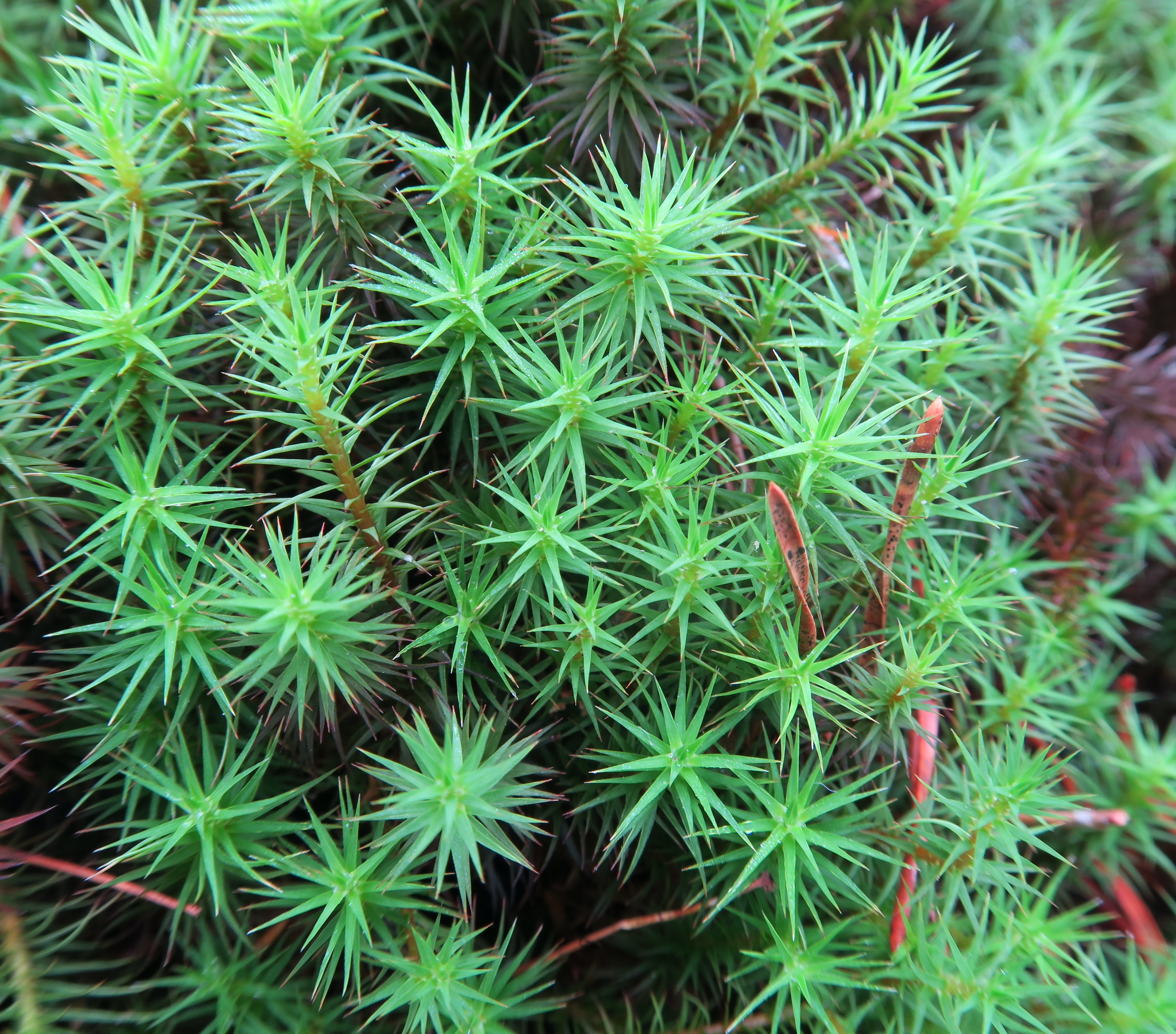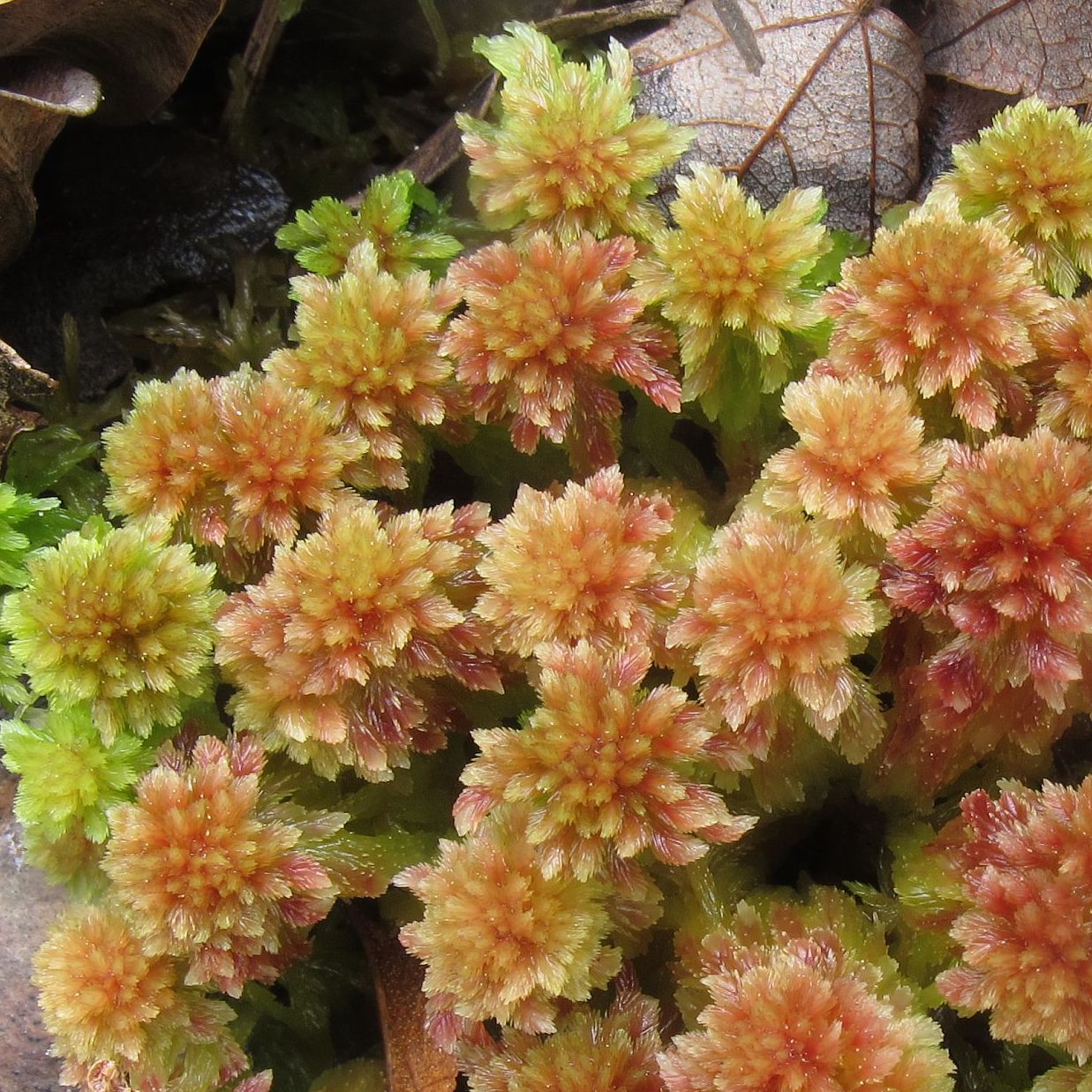Bryophytes
Mosses form fascinating miniature forests complete with homes for myriads of tiny organisms. They help stabilize soil and moderate water retention in the landscape which helps the rest of the plants and animals to thrive. Mosses such as the peat mosses can influence the environment to the point that they expand the extent of bogs, thus increasing their ability to absorb water and sequester carbon.

These small land plants, bryophytes, absorb nutrients through their whole surface and have no true roots, flowers or seeds or active mechanisms to keep water. Instead they have rhizoids to attach to the substrate, they produce spores, and have evolved various other unique non-active mechanisms to retain water. They can reproduce by fragmentation, sometimes with specialized vegetative propagules.
The term bryophytes, which literally means moss plants, consists of three groups: hornworts, which are members of the Phylum Anthocerotophyta; liverworts, which are members of Phylum Marchantiophyta; and mosses, which are in Phylum Bryophyta.

This website provides an up-datable list of the 700 or so bryophytes documented by specimens collected from North Carolina. As a part of this website we will provide an expanding compendium of information that can assist anyone studying bryophytes by way of interpreting, identifying and coming to understand these amazing little plants.